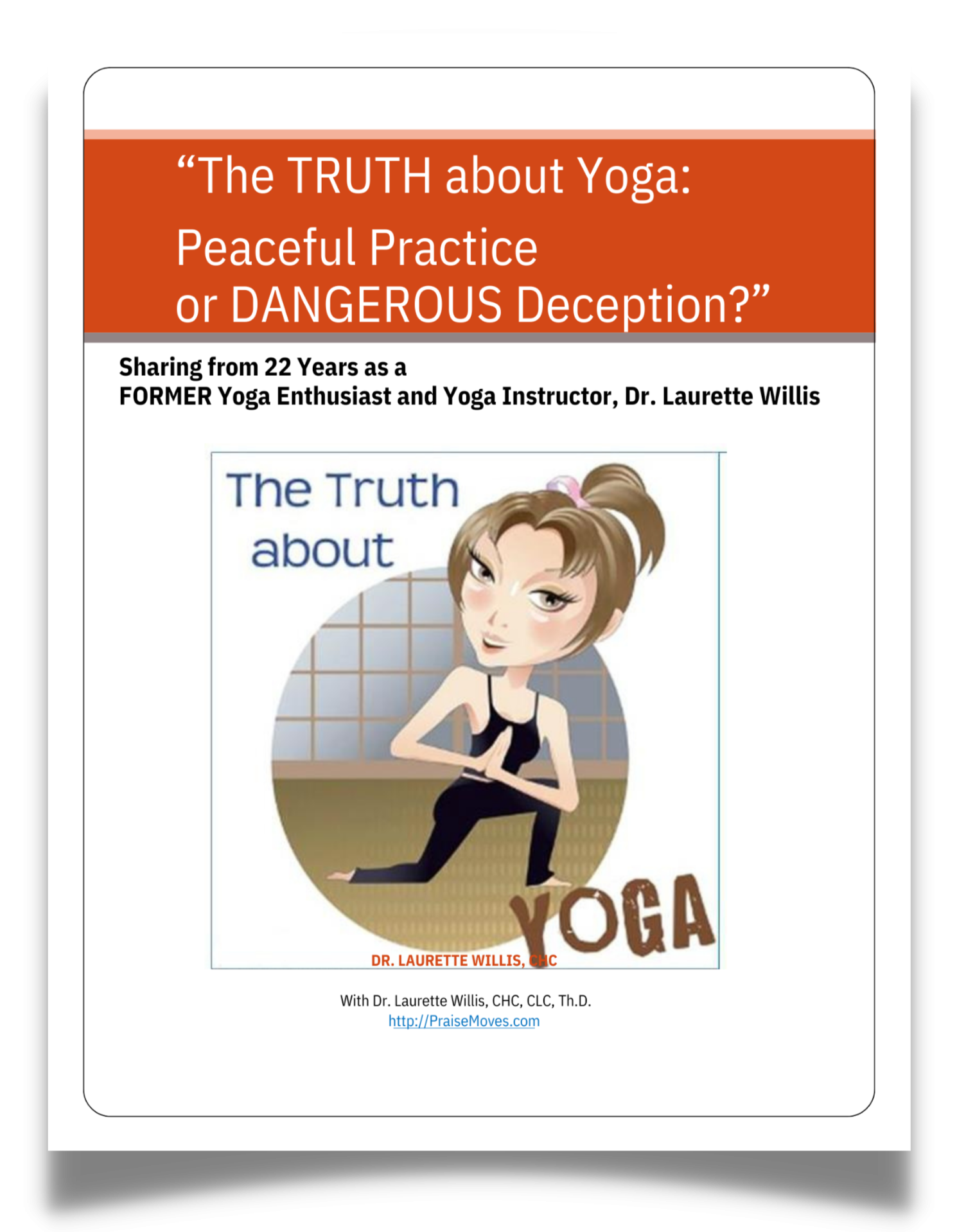WELCOME TO PRAISEMOVES!
TRANSFORM YOUR
WORKOUTS INTO WORSHIP!
Our Goal at PraiseMoves is to help you become a
Fit Witness for Christ in spirit, soul, AND body.

WELCOME TO
PRAISEMOVES!
TRANSFORM YOUR
WORKOUTS INTO
WORSHIP!
Our Goal at PraiseMoves is to help you become a Fit Witness for Christ in spirit, soul, AND body.

WORD-INFUSED WORKOUTS
Uncompromising Christian Fitness at its Finest.


Why a Christian ALTERNATIVE to Yoga?

WORD-INFUSED WORKOUTS
Uncompromising Christian Fitness
at its Finest.


Why a Christian ALTERNATIVE to Yoga?

FREE eBOOK!

FREE eBOOK!

PHYSICAL BENEFITS OF PRAISEMOVES
PraiseMoves helps to improve flexibility. Flexibility refers to the ease with which one may move a joint through a specific range of motion. The greater one's flexibility, the greater the range of motion a joint can move through. Tight muscles make many tasks difficult. By keeping the body flexible, many daily tasks such as bending and lifting are much easier.

PHYSICAL BENEFITS
OF PRAISEMOVES
PraiseMoves helps to improve flexibility. Flexibility refers to the ease with which one may move a joint through a specific range of motion. The greater one's flexibility, the greater the range of motion a joint can move through. Tight muscles make many tasks difficult. By keeping the body flexible, many daily tasks such as bending and lifting are much easier.


FOUNDER OF PRAISEMOVES
DR. LAURETTE WILLIS
Dr. Laurette Willis founded PraiseMoves Fitness Ministry in 2001 and has been certifying PraiseMoves Instructors around the world since 2005.
She has helped countless thousands of people become “Fit Witnesses for Christ in spirit, soul, and body” since PraiseMoves' inception in 2001.
As a Keynote Speaker and Author with Harvest House Publishers and Destiny Image, Dr. Willis has spoken internationally and has produced fitness DVDs, books, and TV shows, as well as trained hundreds of Certified PraiseMoves Instructors around the world.
PraiseMoves (“The Christian ALTERNATIVE to Yoga”) offers Christian Fitness workouts, as well as online and in-person Classes by Certified PraiseMoves Instructors (CPIs) on six continents.
Certified PraiseMoves Instructor training is offered to equip women and men for Fitness Ministry.
PraiseMoves Certification Training comes first, and then CPIs can apply for additional certifications including PraiseMoves Gold (to teach seniors & limited mobility), PraiseKICKS (Kickboxing with the Word), PraiseWAVES (Aqua PraiseMoves), MIRA! (called “The Christian Alternative to Zumba!”), L.I.F.T. (Laughter-In-Fitness-Training), PraiseBarre (High-Intensity, Low-Impact Barre + Praise), HipHop2Scripture (chill HipHop moves to Scripture), Power PraiseMoves, and our newest certification, Praiselates (Praise-infused Pilates).
FOUNDER OF PRAISEMOVES
DR. LAURETTE WILLIS

Dr. Laurette Willis founded PraiseMoves Fitness Ministry in 2001 and has been certifying PraiseMoves Instructors around the world since 2005.
She has helped countless thousands of people become “Fit Witnesses for Christ in spirit, soul, and body” since PraiseMoves' inception in 2001.
As a Keynote Speaker and Author with Harvest House Publishers and Destiny Image, Dr. Willis has spoken internationally and has produced fitness DVDs, books, and TV shows, as well as trained hundreds of Certified PraiseMoves Instructors around the world.
PraiseMoves (“The Christian ALTERNATIVE to Yoga”) offers Christian Fitness workouts, as well as online and in-person Classes by Certified PraiseMoves Instructors (CPIs) on six continents.
Certified PraiseMoves Instructor training is offered to equip women and men for Fitness Ministry.
PraiseMoves Certification Training comes first, and then CPIs can apply for additional certifications including PraiseMoves Gold (to teach seniors & limited mobility), PraiseKICKS (Kickboxing with the Word), PraiseWAVES (Aqua PraiseMoves), MIRA! (called “The Christian Alternative to Zumba!”), L.I.F.T. (Laughter-In-Fitness-Training), PraiseBarre (High-Intensity, Low-Impact Barre + Praise), HipHop2Scripture (chill HipHop moves to Scripture), Power PraiseMoves, and our newest certification, Praiselates (Praise-infused Pilates).
TAKE A PRAISEMOVES CLASS
Experience the difference for yourself!
We offer in-person and virtual workouts around the world,
from our world-class instructors!
TAKE A
PRAISEMOVES CLASS
PRAISEMOVES CLASS
Experience the
difference for yourself!
difference for yourself!
We offer in-person and virtual workouts around the world, from our world-class instructors!
OUR BENEFITS
PRAISEMOVES INCLUDES...
OVER 150 POSTURES
Each one has a related scripture to help you memorize the Word of God as you refresh your body and are TRANSFORMED by renewing your mind on the Word of the Living God (Romans 12:2).
LIVE CLASSES HELD GLOBALLY
We have trained Certified PraiseMoves Instructors offering in-person and LIVE online classes all over the world!
LIBRARY OF ONLINE WORKOUTS
You can purchase classes for adults, children, seniors, and those who are athletic or just starting out.

OUR BENEFITS
PRAISEMOVES INCLUDES...
OVER 150 POSTURES
Each one has a related scripture to help you memorize the Word of God as you refresh your body and are TRANSFORMED by renewing your mind on the Word of the Living God (Romans 12:2).
LIVE CLASSES HELD GLOBALLY
We have trained Certified PraiseMoves Instructors offering in-person and LIVE online classes all over the world!
LIBRARY OF ONLINE WORKOUTS
You can purchase classes for adults, children, seniors, and those who are athletic or just starting out.

JOIN THE MISSION!
BECOME A CERTIFIED PRAISEMOVES INSTRUCTOR
You can start your own Fitness Ministry.
We walk you through every single step!
JOIN THE MISSION!
BECOME A CERTIFIED
PRAISEMOVES
INSTRUCTOR
You can start your own Fitness Ministry. We walk you through every single step!
Be in the Know with our Blogs!
BECOME A CERTIFIED HEALTH COACH
WITH A BIBLICAL WORLDVIEW
Answer the Lord's calling
without the hefty expense or getting entangled in the
New Age/Metaphysical trends that saturate many CHC trainings.
BECOME A
CERTIFIED HEALTH
COACH WITH A
BIBLICAL WORLDVIEW
Answer the Lord's calling without the hefty expense or getting entangled in the New Age/Metaphysical trends that saturate many CHC trainings.









